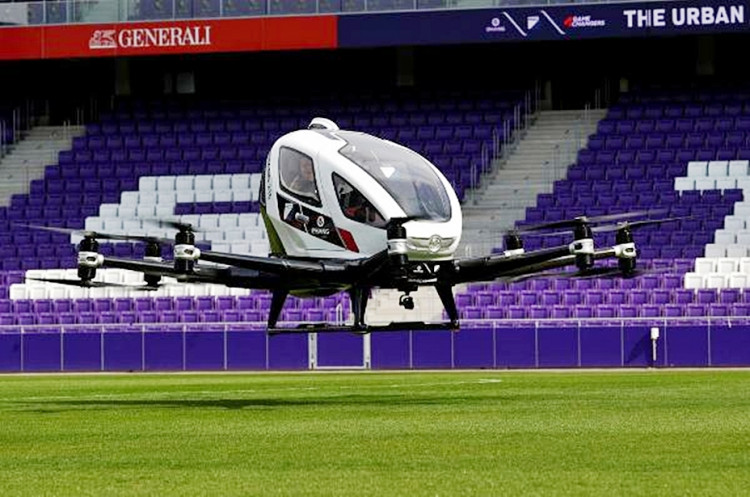Chinese drone maker Beijing Yi-Hang Creation Science & Technology Co., Ltd. -- more popularly known as Ehang -- intends to launch the world's first autonomous passenger drones in Guangzhou by 2020 if all goes well.
The pilot project in Guangzhou will see Ehang establish three or four regular flight routes for passengers to take, said co-founder Derrick Xiong to CNBC. Ehang will likely use the Ehang 184 Autonomous Aerial Vehicle (184 AAV), a low-altitude, single passenger-carrying quadcopter, for its "hover taxi" passenger service.
The Ehang 184 can ferry a single passenger along a programmed course at 100 km/h at an altitude of 300 meters. A passenger-only has to select a destination and Ehang 184 will take-off, fly the route and touchdown at the landing site. The drone will constantly be monitored along the way by a ground control center.
The Ehang 184 has eight propellers driven by electric motors. It can recharge in two hours and make trips of up to 30 minutes.
This autonomous drone is designed with full redundancy so that if one power system module fails, the vehicle can still operate a normal flight plan and ensure the safety of the passenger.
It also comes with an embedded fail-safe system to ensure that if any component malfunctions or disconnects, the aircraft will immediately land at the nearest possible area to ensure passenger safety.
The Ehang 184 was first made public at CES 2016 in Las Vegas, Nevada as the Ehang 184 MegaDrone. It was marketed as the "world's first self-flying commercial taxi car."
Ehang also has a two-seater version named the Ehang 216. This version made a test flight in Vienna, Austria last April.
If Ehang sticks to its 2020 commitment in Guangzhou, it will make China the first country where passengers travel in autonomous flying vehicles.
Dubai should have been the first country to win this honor back in 2017 when Ehang announced the world's first hover taxi service. In January 2016, Ehang announced new drones capable of carrying passengers.
Ehang partnered with Dubai's Road & Transportation Agency in 2017 to launch a hover taxi service starting later that year but nothing came of this project and it was abandoned.
Xiong said Ehang will be working with the authorities in Guangzhou to build infrastructures like landing and take-off pads. It's also working with Chinese regulators to develop an updated set of regulations to monitor this new technology since existing ones are either absent or inadequate.
"We are seeing so many positive changes in the past several years," said Xiong. "When we started from ... the year 2016 ... nobody even knows what is this all about. So earlier this year we have this official approval from China Civil Aviation Administration basically allowing us to have this pilot program ... because we are ... working together ... to build up the standard."






